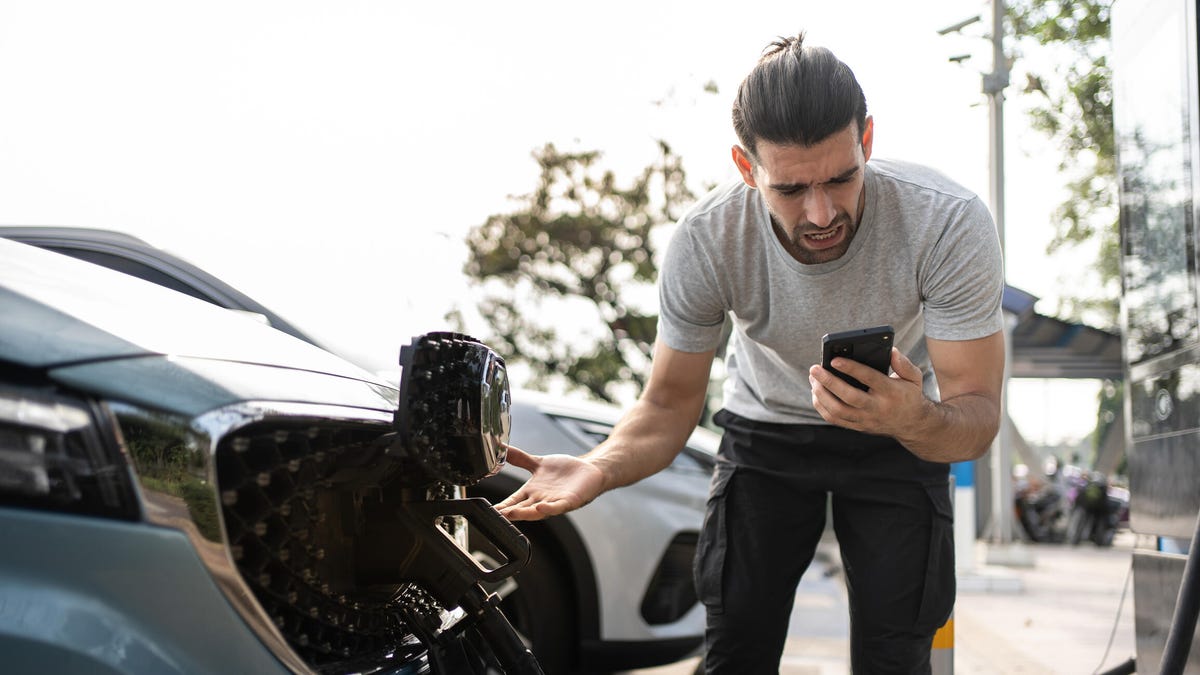Biden Administration Provides $100 Million to Fix and Replace Broken EV Chargers
One in five trips to a public charger ends without fueling up, thanks to broken chargers, long lines and other headaches.

At least 4% of public EV chargers have been identified as nonoperational.
The US Department of Transportation has released $100 million to repair thousands of broken electric vehicle chargers across the US.
On Wednesday, applications were made available to request the repair or replacement of nonoperational chargers as part of the Biden administration's goal of creating a robust and reliable network of a half-million public charging ports by 2030.
As of Sept. 11, almost 6,300 EV chargers were listed as unavailable, according to the US Department of Energy's Alternative Fuels Data Center, a little more than 4% of the 151,506 total public charging ports.
A charger can be identified as temporarily unavailable for a variety of reasons, according to the Federal Highway Administration, including routine maintenance or a power outage.
"Charging your electric vehicle should be as easy and convenient as filling up a gas tank -- and this investment will make our EV charging network more reliable, full stop," Federal Highway Administrator Shailen Bhatt said.
Privately owned chargers are eligible for repairs, the FHA said, so long as they are available to the public to charge their EVs without restriction.
The money comes from the Bipartisan Infrastructure Law passed by Congress in November 2021 that includes $7.5 billion for EV charging infrastructure. Around $5 billion of that is intended to help states build out charging sites, primarily along interstate highways.
Having already approved about $1 billion for thousands of new EV chargers, the Transportation Department is now looking to improve the reliability of existing ones.
The government has its work cut out for it in improving confidence in EV charging and overcoming range anxiety.
In August, a survey from J.D. Power indicated customer satisfaction with public Level 2 chargers reached 617 on a 1,000-point scale, a 16-point decline from last year and the lowest level since the consumer analytics firm began tracking in 2021. Satisfaction with DC fast chargers sunk even further, declining 20 points to 654.
Complaints included the speed and cost of charging, as well as long lines and broken chargers.
"The situation is stuck at a level where one of every five visits ends without charging, the majority of which are due to station outages," Brent Gruber, executive director of J.D. Power's EV division, said in a statement.
Electrify America had the lowest rating for DC fast chargers (538), while Blink had the worst ranking for Level 2 Chargers (535).
Tesla owners were the most content, rating the Supercharger network 745 out of 1,000. But when they have to use non-Tesla chargers, their satisfaction plummets to 550. The Elon Musk-led corporation began allowing non-Tesla vehicles to access Superchargers in March.
That could boost satisfaction, Gruber said, and at the very least alleviates scarcity and reliability issues.
"It's just too early to tell if it can reach the satisfaction levels of Tesla owners who are already part of that fully integrated Tesla ecosystem," he added. "Although the majority of EV charging occurs at home, public charging needs to provide a much better experience across the board -- not just for the users of today, but also to alleviate the concerns of skeptical future customers."
For more on EV charging, find out where you can fuel up for free and why the country's growing charging infrastructure can't leave cities behind.

